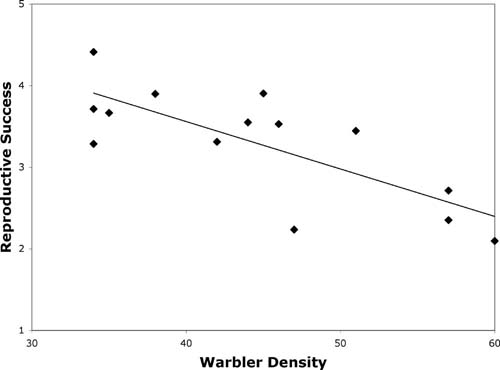Density
| |

Reproductive success (number
of young produced per pair per year) in relation to the density
of Black-throated Blue Warblers (individuals per 64 ha) on the
main study plot at Hubbard Brook from 1986 to 1999 (data from Holmes, Rodenhouse, and Sillett).
|
One of the most exciting results to come
out of the long-term research on Black-throated Blue Warblers at Hubbard
Brook was the strong relationship between density and reproductive
success. As the number of birds in the study area increased, the average
number of young raised decreased from a high of approximately four
to a low of about two, so the average reproductive success was lower
at higher densities.
Researchers discovered that high densities
of warblers had two effects on the population. First, warblers were
packed more tightly into the best habitat, so that territories became
smaller and the success of all the birds was lower. Second, when the
population was large, birds also set up territories and bred in habitat
that they didn’t breed in when the population was smaller. This
habitat isn’t quite as productive, since birds breeding there
had even worse success than those packed into the better habitat.
Through these two pathways, the reproductive success of the whole
population was lower when the population is large.